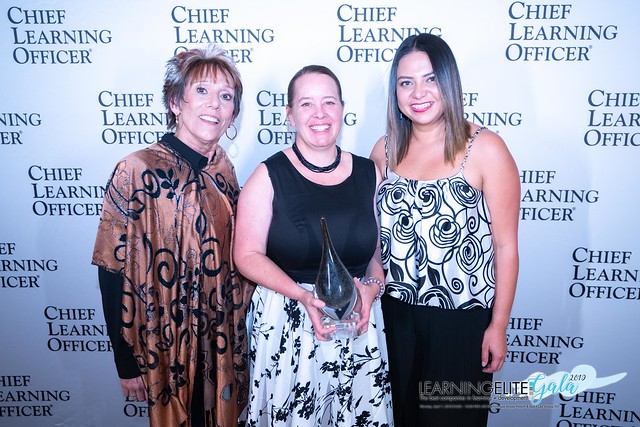For Telus International, learning is not an option — it is a requirement. Employees at the international telecommunications company are a part of the learning process beginning with their first steps into the organization.

“Our program is a very robust and comprehensive program,” said Michelle Braden, executive director of TI’s learning and development program. “It moves from the minute somebody joins the company until they become CEO. We prepare people for each level that they move through.”
Six years ago, TI had no L&D organization or budget. Learning opportunities were limited, and low employee engagement and high turnover were impacting profitability and customer satisfaction. After hiring Braden in 2012 as its first CLO and launching its first leadership development program, TI formed its Global Learning Excellence organization in 2015. The GLE deployed a progressive, four-level career path for all call center employees, called the Learning@TI Roadmap. The road map is complemented by TI’s Learn and Grow programs, which provide continuous learning through diverse content and modalities.
While many other companies practice discontinuous development, where employees only reach certain levels at different points in their careers, TI believes in a different approach.
“Here we have annual leadership forums for our top leaders. We have 360s that we do for our top leaders with individual development plans,” Braden said. “We have a full blend of learning that’s a blend of instructor-lead, e-learning, microlearning, coaching and mentoring. It’s all-inclusive, and it’s really comprehensive.”
Part of the impetus for TI to develop its learning program back in 2012 was an identified need for the company to learn globally.
“We support global companies in multiple geographies, and they want to know that we’re developing our team members and our leaders the same way anywhere in the world, so we can do something that is impactful globally and is standardized globally,” Braden said. “And it’s going to have not only an impact on our business results but also on our employee engagement.”
TI’s learning program supports continual development for employees. They give leaders an opportunity to teach and spread their knowledge across the globe by working with the learning team and creating videos, which Braden said resemble TED Talks.
“One of our objectives is to focus on engagement,” Braden said. “We’re always looking at activities like that because we know the company has a high target for engagement. We are always looking at learning that will help drive that engagement and help team members feel like it’s worth staying here and continuing to grow.”
At TI, learning does not feel mandatory, but essential and necessary, she said. They take a personal approach with their employees and, in turn, it reciprocates engagement.
“Yes, we address the competencies, but we’re focused truly on the learner and trying to ensure that that person not only stays engaged in the course learning but that they feel more productive and they feel like a higher performer once they go back to the job,” Braden said.
Leaders at TI, including the CEO, are all supportive of the learning program and continuously participate in forums that allow them to share their expertise and knowledge.
“We maintain that leadership commitment. Every year when we put in for our budget request since we’ve launched our strategy, they’ve never touched our budget,” Braden said. “Other budgets get cut. Ours has never been cut.”
TI has incorporated many different methods and modalities into its learning program. From videos to whiteboard animation, the learning team has worked hard to make sure the best tools and technologies are available to employees to help them learn. Braden said one thing that people have responded exceptionally well to is a self-directed online tool with a 98 percent satisfaction rate and a 97 percent completion rate.
A couple of years ago, TI recognized there was little to no interaction between senior leaders and their extensive network of countries and employees. So they built video catalogs with interviews of top leaders and combined it with whiteboard animation.
“People love those because they feel like they’re getting advice and guidance and learning more about these different leaders,” Braden said. “We had never seen anyone use live video and whiteboard animation. We’ve seen whiteboard animation. We’ve seen live video. We decided to make it more interesting. We combined the two, and it turned out to be an awesome solution.”
TI is now growing by 20 percent year after year, which Braden said could not have been achieved without the organization’s now robust learning strategy. Braden said their employee engagement keeps growing, rising from 70 percent before the program launched to 86 percent now.
“We’ve gone out and done surveys, and when team members are asked, ‘What is the most important thing, the thing that keeps you here that you love?’ It’s learning,” Braden said.
SNAPSHOT:
Telus International must use client-provided new hire training, regardless of quality. In response, Telus turbo-charged facilitator training, offered facilitators performance-based bonuses, and began selling clients training services. New-hire learner satisfaction and performance increased, attrition dropped to industry-leading lows, and Telus generated $579,000 in revenue.
Company size: 30,000
Location: Canada














